Natrix maura
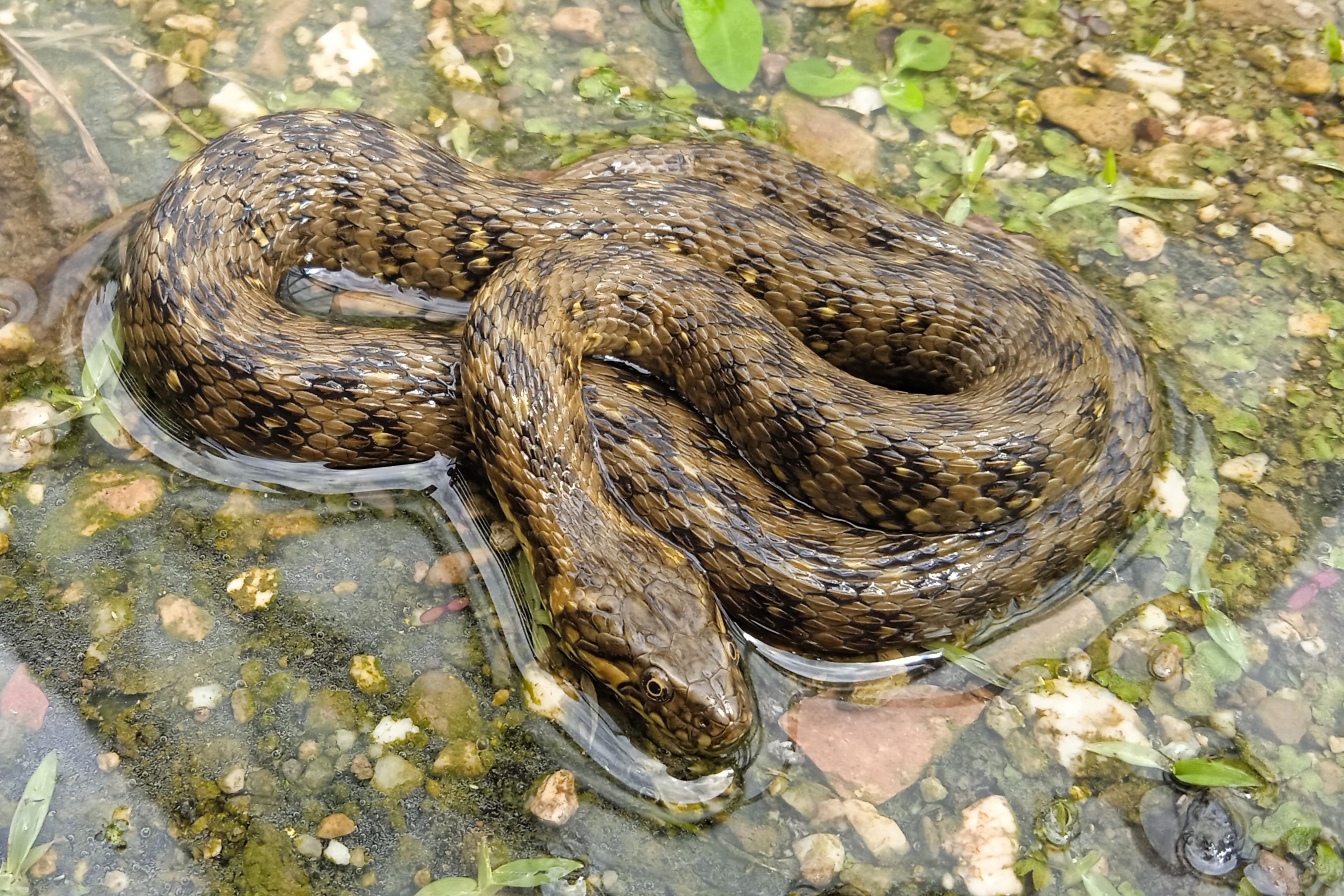

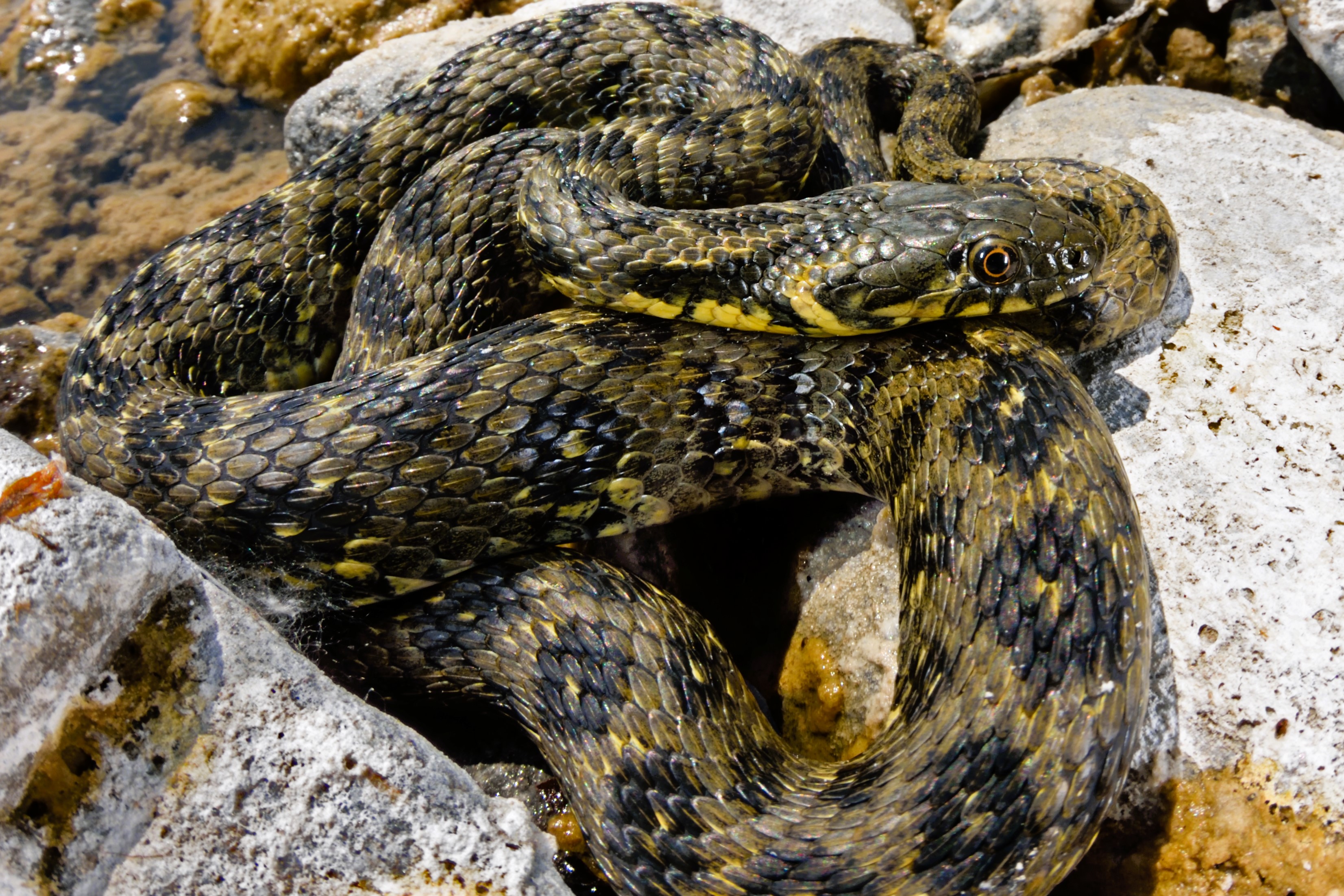

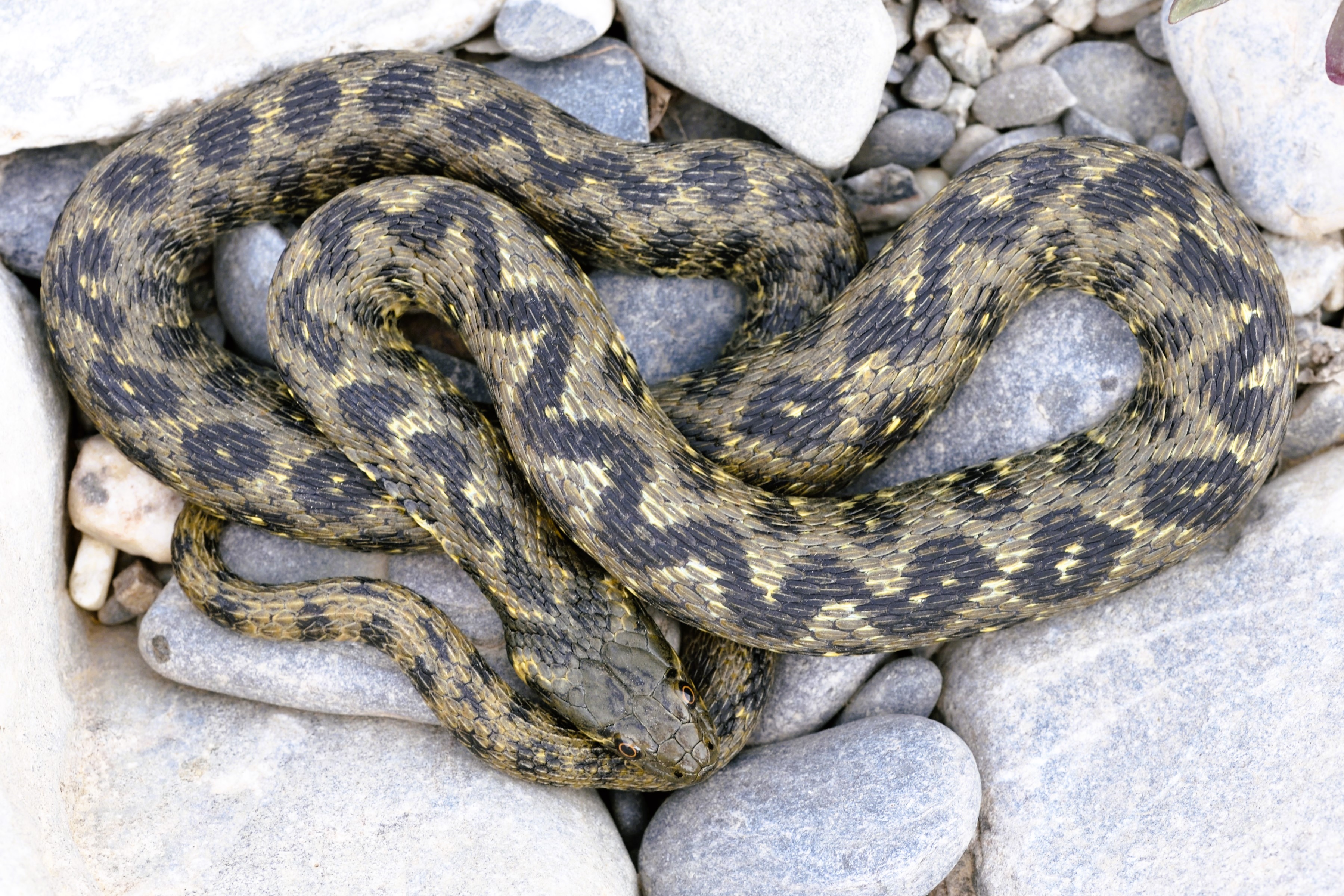
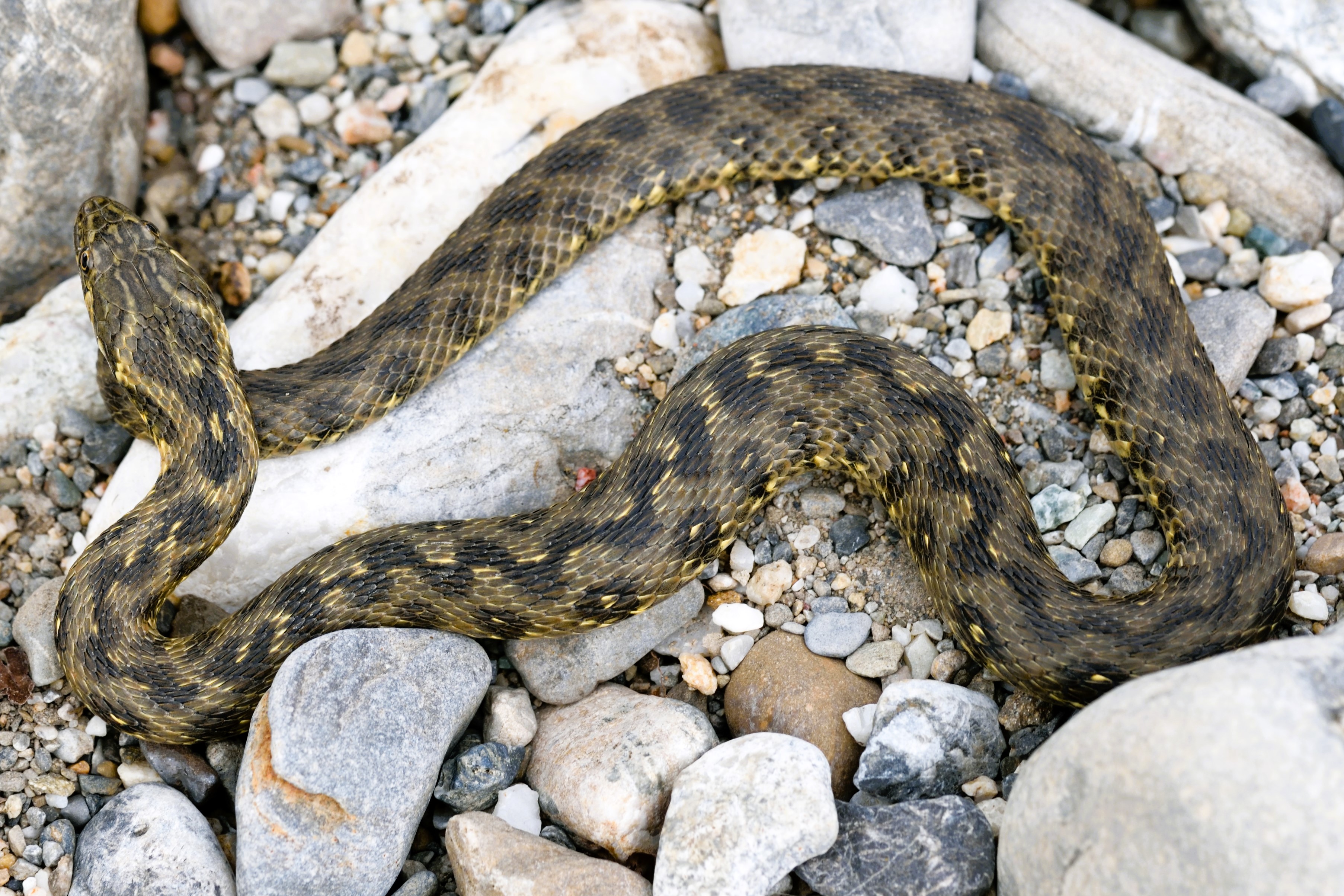
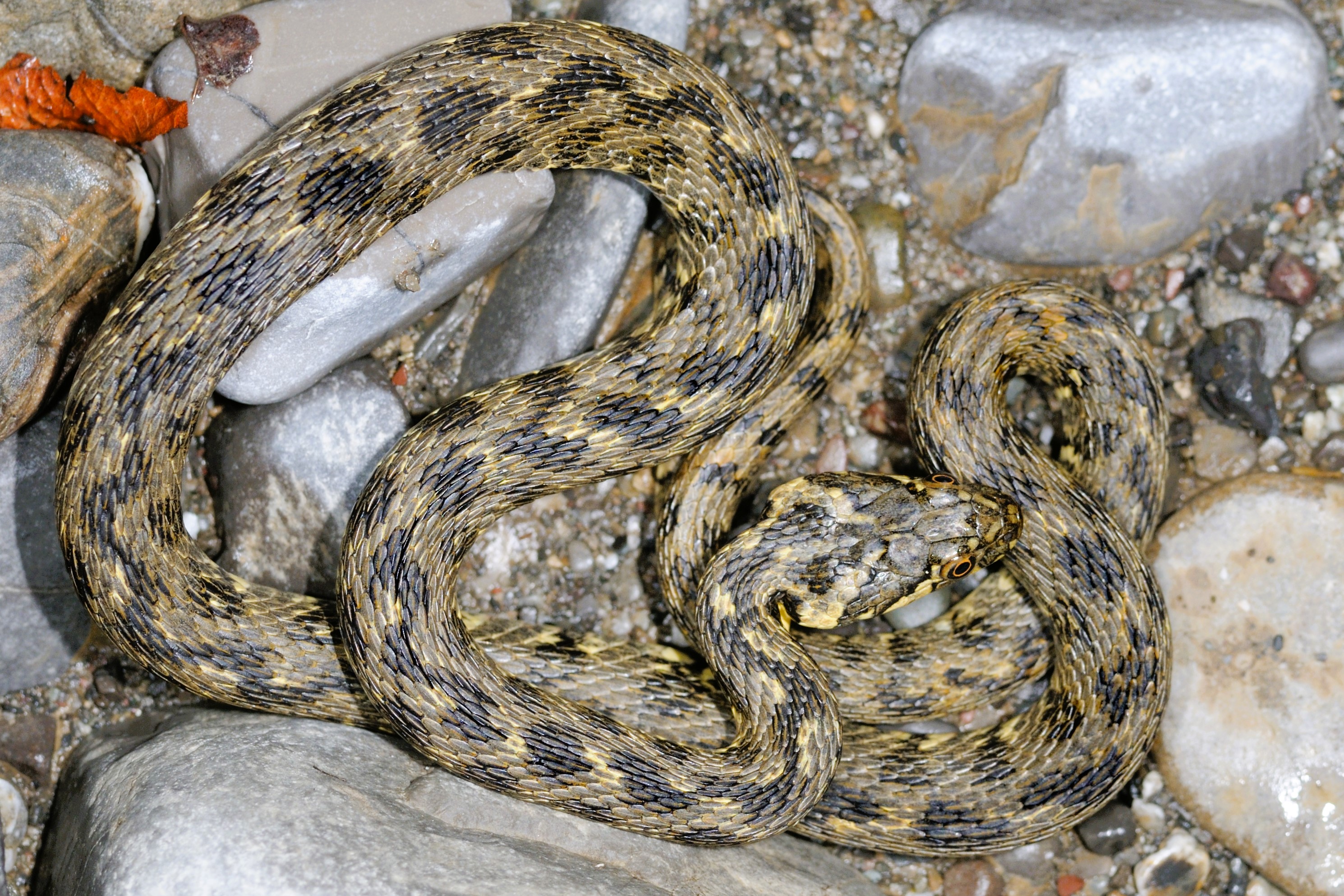


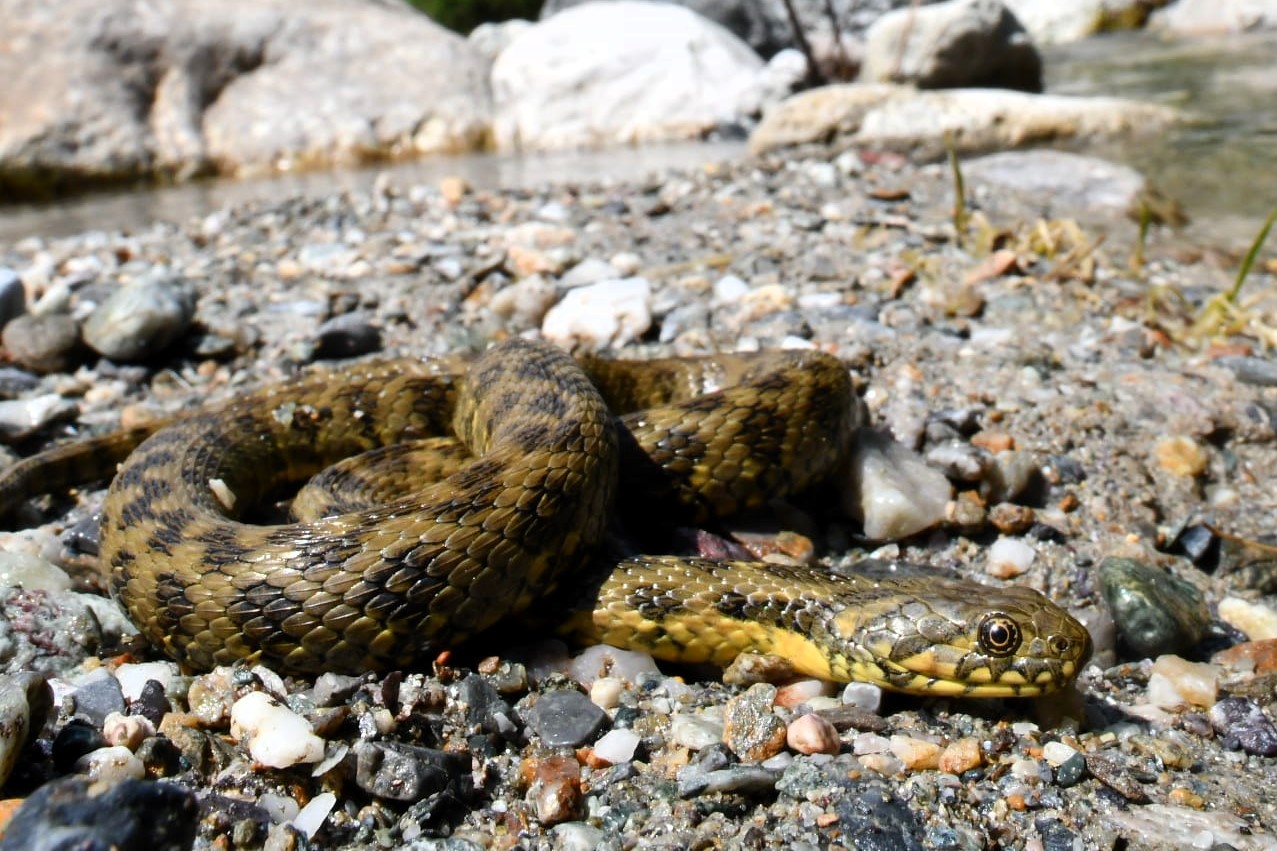
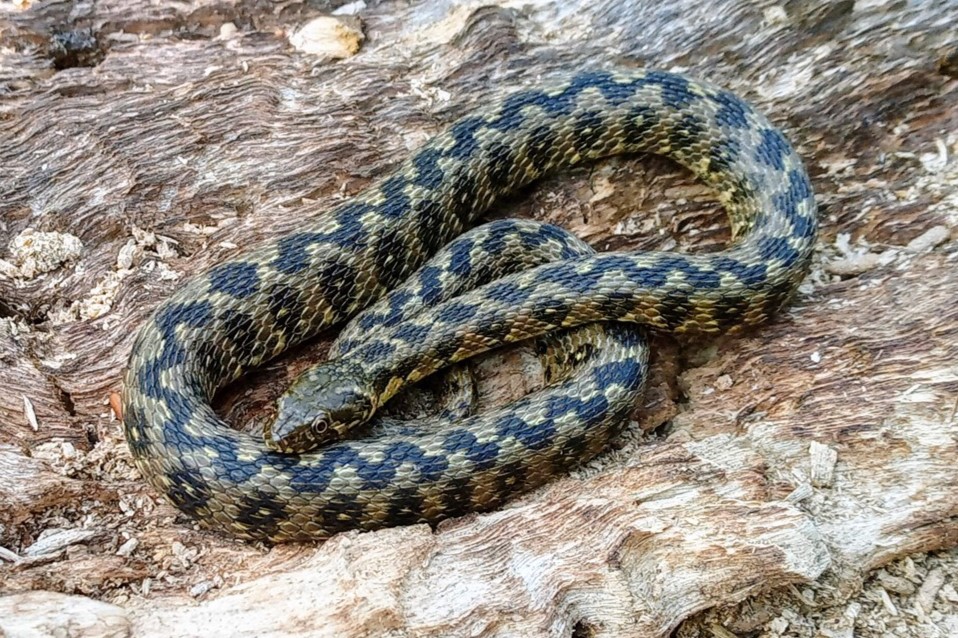
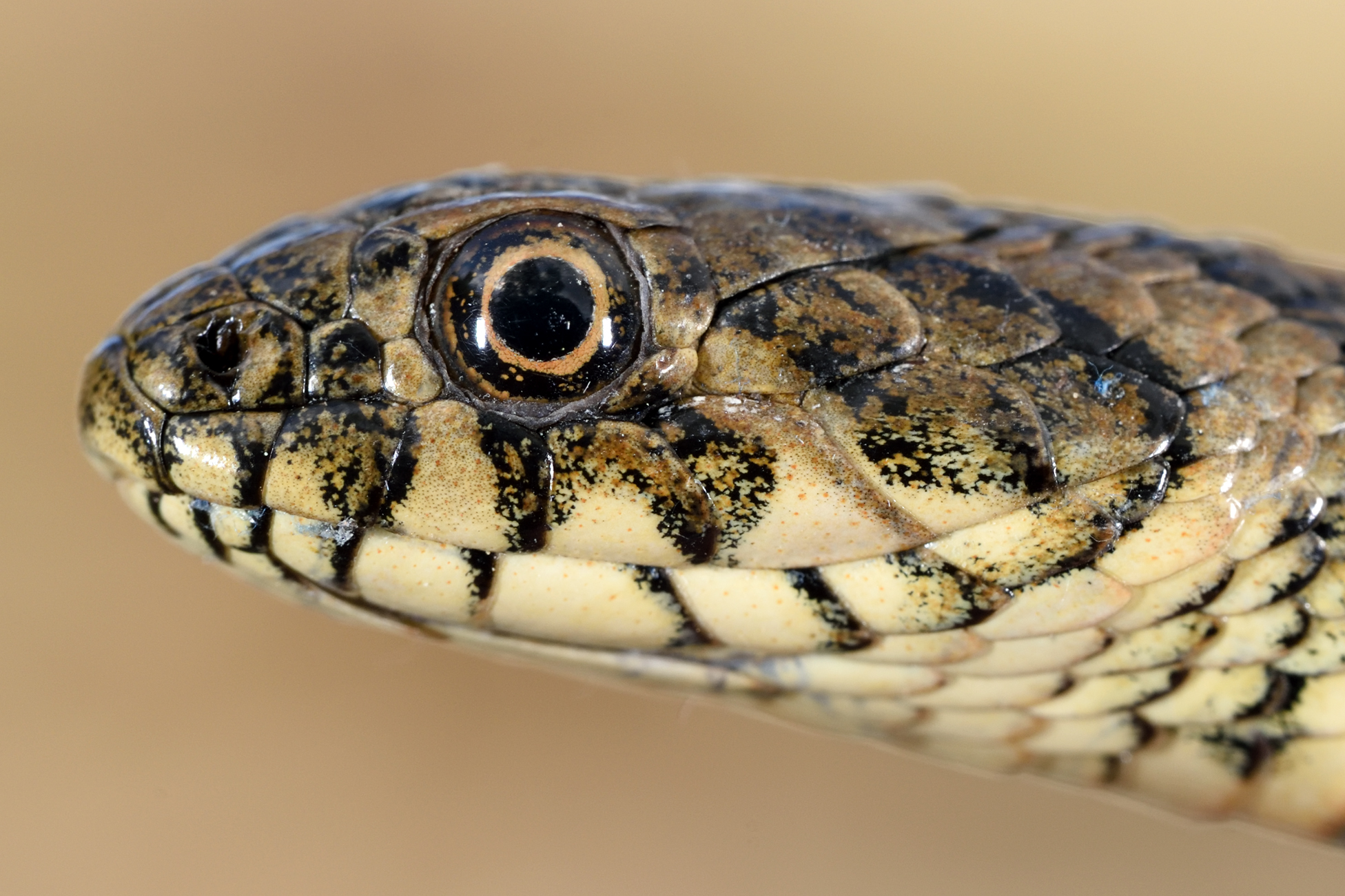
Reptilia → Squamata → Colubridae → Natrix → Natrix maura
Aspisurdu, Biscia d'aegua, Biscia, Bissa, Vespusùrdu, Vipera, Zerpia.
The Viperine Snake ( Natrix maura ) is a medium-sized snake with a relatively stout body and a marked difference in size between sexes: females can exceed 39 in (100 cm), while males rarely exceed 33 in (85 cm). The head is broad and flat, with a triangular profile, well distinguished from the neck. The eyes are large, with an orange iris and round pupil, giving the snake a lively gaze slightly turned upwards. The back shows strongly keeled scales arranged in regular rows, accentuating the animal's rough appearance.
The background color ranges from brown to greenish, with darker spots or dorsolateral bars that may merge into a zigzag line, and the flanks often show dark ocelli with a lighter center. The tail is well distinguished, longer in males. The mouth has aglyphous teeth (venomless). Although it is not equipped with specialized sound-producing organs, when threatened it can emit a loud hiss and adopt defensive postures similar to those of true vipers ( Vipera aspis ).
Mainly distributed in southwestern Europe, stretching from the Iberian Peninsula to southern France and Switzerland. In Italy, its presence is predominantly in the northwestern regions, including Lombardy, Piedmont, Liguria, and parts of Sardinia.
In the province of Savona and western Liguria, the Viperine Snake is a regular presence in humid environments, found from sea level up to about 2,600 ft (800 m) above sea level.
A species closely tied to aquatic environments, the Viperine Snake prefers calm or slow-moving waters such as streams, ponds, marshes, springs, cisterns, and artificial basins. It is often seen on shores, submerged in water, or on sun-warmed stones, but adult females may also move away from water during particular life phases. The need for sites suitable for thermoregulation and egg laying guides the species' local distribution.
The Viperine Snake is mainly diurnal and shows marked swimming abilities: it is the most aquatic snake in Liguria. In water, it moves nimbly, while on land it appears clumsier and slower. It frequents environments where it can alternate long bathing periods with basking on banks, often in small groups.
The annual cycle sees adults active from March to October. Right after emerging from hibernation, the first breeding period begins, which can last for two months; a second cycle can occur in autumn if the weather remains favorable. Egg laying takes place at the end of June, with clutches of 4 to more than 30 eggs that hatch between late August and September. Hatchlings measure 5–8 in (12–20 cm) at birth.
The diet consists mostly of aquatic animals such as fish, amphibians (adults, tadpoles, and eggs), and various aquatic invertebrates (e.g., insects and crustaceans). It rarely feeds on small mammals incidentally caught near water. Prey are detected by sight and smelling, and swallowed alive, without any aggression towards humans or pets.
The Viperine Snake has numerous natural predators: birds of prey, carnivorous mammals, other snakes, and large fish like Pike (Esox lucius) are constant threats. Human activity, however, is the greatest danger: the snake is often killed by mistake, confused with the common viper ( Vipera aspis ), or threatened by loss or pollution of wetland areas, due to excessive use of herbicides, insecticides, and other agrochemicals which affect both its survival and the abundance of its prey.
During thermoregulation, the Viperine Snake flattens its body by opening its ribs, increasing the surface area exposed to the sun and thus promoting heat absorption. When disturbed, it uses defensive strategies that mimic the common viper ( Vipera aspis ): it flattens its head, lifts its snout, hisses loudly, and can simulate attacks with quick body lunges. Moreover, if captured or threatened, it emits a foul-smelling liquid from a cloacal gland to discourage predators.
It lacks venom glands and venom-injecting systems: its bite poses no risk to humans.